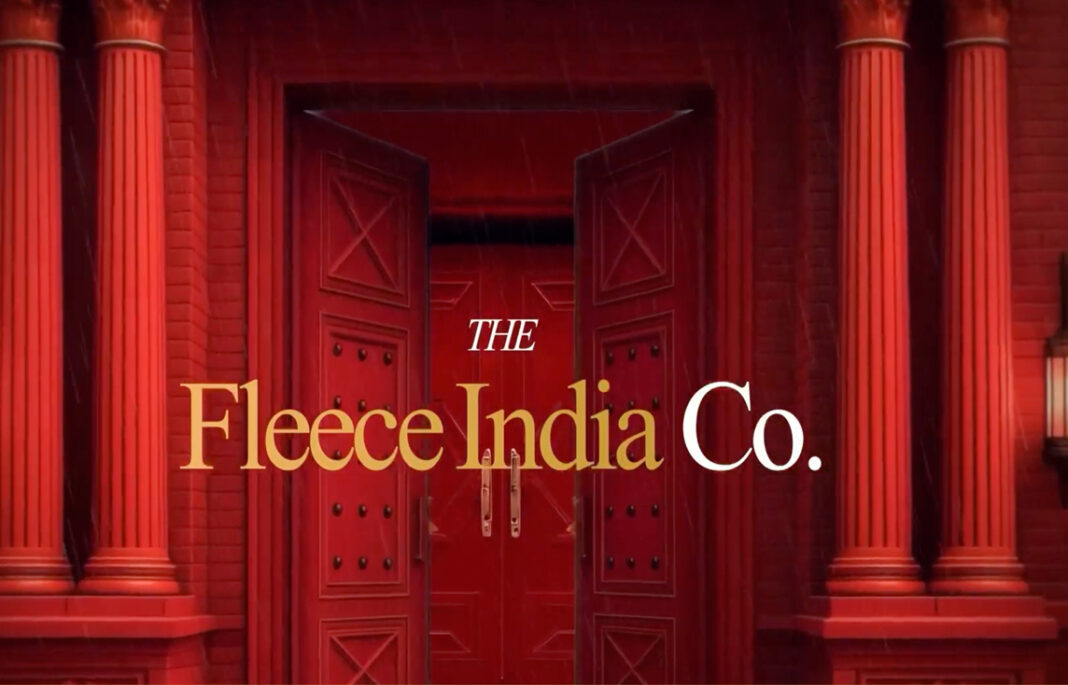Razorpay’s new “Fleece India Company” campaign calls out global payment giants for unfairly charging Indian businesses. Built as a full cinematic universe inspired by Lagaan, the AI-crafted campaign features a compelling villain and bold storytelling, redefining B2B marketing while spotlighting the hidden costs faced by exporters, freelancers, and global sellers.
Razorpay has turned a typically sober corner of the fintech world into a cinematic battlefield, launching its bold new international campaign, “Fleece India Company,” with the clear intention of challenging the global payment giants that, for years, have quietly taken advantage of Indian exporters, freelancers, and businesses working with international clients. In a landscape where B2B marketing is often reduced to product explainers and jargon-heavy pitches, Razorpay’s latest effort argues for a very different approach—one that leans into world-building, emotional storytelling, and cultural memory to expose what many Indian businesses have long suspected: that hidden fees and unfair charges have been steadily cutting into their earnings. With this campaign, the company has found a powerful narrative tool to say what spreadsheets and reports never could.
The genesis of the “Fleece India Company” began with a simple but provocative question within the Razorpay creative team: how far can B2B marketing stretch before it stops being B2B? The answer, as they soon discovered, was that the canvas was far bigger than most brands ever imagined. What started as a set of fragmented seed ideas soon evolved into a fully formed cinematic universe, scripted, designed, and built over weeks of creative exploration. Through an AI-led production process, the team generated characters, developed plotlines, and experimented with tones and textures, pushing the limits of what corporate storytelling can achieve. The ambition was clear from the start—not just to communicate a payment solution, but to create a cultural moment that Indian businesses would feel seen by.
At the heart of this universe stands its antagonist, a figure designed to be both unforgettable and infuriating. Drawing inspiration from the world of Lagaan, the team developed a character rooted in the familiar legacy of exploitation—echoing the iconic “teen guna lagaan dena padega” sentiment that symbolised unfair taxation and colonial extraction. Razorpay’s modern antagonist, while entirely fictional, embodies the same spirit of injustice that Indian businesses continue to face today, particularly in the form of excessive fees charged by global payment systems. But unlike the British-era villainy of Lagaan, this character is rendered through the lens of today’s digital age and global markets. Every nuance—from facial expressions to costume textures—was shaped through detailed character sheets, persona sketches, mood boards, and endless AI iterations, all crafted entirely in-house. The result is a villain who does not just represent a system, but feels like a living, breathing embodiment of unfairness, designed to make audiences root for the hero: Indian businesses demanding a better deal.
The project demanded an unusually collaborative and experimental structure from the creative team, who spent weeks pushing through countless AI generations, failures, discoveries, and breakthroughs to arrive at what they confidently describe as a “blockbuster.” From Day one, energy within the team was electric, shaped by the shared belief that this story had the potential to redefine how B2B campaigns are imagined in India. Avantika Swarup, Divya Lohia, Jubin V Jose, Priyank Hegde, and Neil Dutta played instrumental roles in the development and execution of the world. They shaped the storyline, refined the character arcs, and ensured that every design detail—from art direction and lighting to sound and dialogues—felt immersive and intentional. Each member approached the brief not as a corporate assignment but as the opportunity to craft a cultural narrative that Indian businesses could rally behind.
The campaign’s conceptual foundation, however, can be traced back to one key mind: Varun Thakar, whose core idea helped bridge the emotional weight of the Lagaan universe with the modern-day realities of global digital payments. Thakar’s script and narrative juxtapose the India of the past, where unfair taxes drained local communities, with the India of today, where freelancers, exporters, and global sellers often find themselves paying the digital equivalent of “three times the tax.” For many, this connection feels not only clever but deeply resonant, transforming a financial grievance into a story of collective identity and defiance. The historical parallel serves as both a reminder and a rallying cry, illustrating how certain patterns of exploitation have simply evolved forms while maintaining their impact.
Backing the idea from inception to execution was Vishwajeet Sinha, whose support ensured the campaign stayed true to its provocative and ambitious intent. In most corporate structures, such unconventional concepts risk dilution as they pass through multiple layers of review. But Razorpay’s leadership chose instead to lean into the boldness of the idea. The involvement of senior leaders—Apuarv Sethi, Saurabh Soni, and Dushyant Panda—offered not just oversight but genuine creative backing. Their time, guidance, and belief ensured that every scene, frame, and narrative beat landed exactly where it needed to, protecting the campaign from compromise and pushing the team to commit fully to the world they were building.
What sets this campaign apart is not merely its narrative or aesthetics, but the fact that it signals a new direction for how brands, especially those in the B2B domain, can communicate with their audiences. While most fintech companies focus on communicating reliability, efficiency, or cost benefits through functional marketing, Razorpay’s “Fleece India Company” leans into emotion, memory, and cultural references. It recognises that Indian businesses—especially those operating globally—have long felt a quiet frustration that rarely finds voice in the corporate world. By bringing that emotion to the surface through a story rooted in popular culture, the campaign does more than market a product; it speaks to a shared experience, turning financial pain points into a narrative of resistance and empowerment.
The use of AI throughout the production process also reflects a broader industry shift, signalling not just a creative choice but a structural transformation. The ability to design characters, develop worlds, and produce immersive visuals at speed allowed the team to experiment freely and iterate rapidly—something that would have been prohibitively expensive and time-consuming in conventional production. This AI-driven model allowed the campaign to be 100 percent built in-house, demonstrating a new way of working that blends creativity with technology, intuition with machine precision, and narrative with immersive design.
For Razorpay, the “Fleece India Company” is not just another piece of advertising. It is a commentary on the global payment ecosystem, a rebellion against the quiet normalisation of unfair charges, and a reminder that Indian businesses deserve better. The cinematic world built around the antagonist is ultimately designed to highlight a very real problem, but it does so in a way that feels entertaining, culturally rich, and deeply relatable. In doing so, Razorpay has opened the doors to a new form of brand storytelling—one where B2B narratives can be as expansive, emotional, and visually striking as the biggest consumer campaigns.
As digital payments continue to evolve and Indian businesses increasingly operate across borders, campaigns like this point to a future where brands do not merely communicate information but craft experiences. Razorpay’s latest effort is a case study in what happens when creative teams are allowed to push boundaries, when leadership backs ambition, and when storytelling draws on cultural history to illuminate present-day realities. With “Fleece India Company,” the brand has not only called out a long-standing issue but has done so with style, conviction, and a cinematic flair that ensures Indian businesses feel seen, heard, and fuelled for change.







